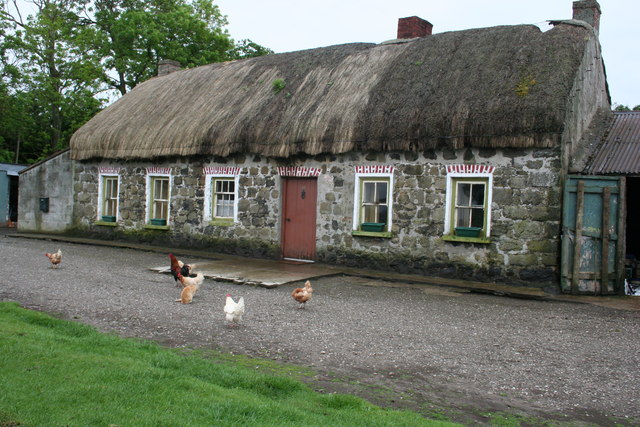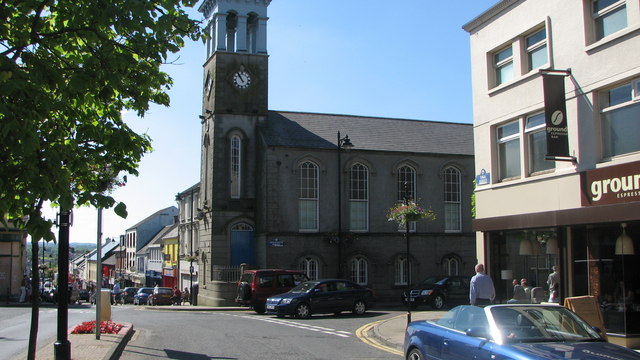|
List Of Civil Parishes Of Ireland
Civil parishes in Ireland are based on the medieval Christian parishes, adapted by the English administration and by the Church of Ireland. The parishes, their division into townlands and their grouping into baronies, were recorded in the Down Survey undertaken in 1656–58 by surveyors under William Petty. The purpose was primarily cadastral, recording land boundaries and ownership. The civil parishes are not administrative units. They differ from Catholic parishes, which are generally larger. Antrim There are 80 civil parishes in County Antrim. * Aghagallon * Aghalee * Ahoghill * Antrim * Ardclinis * Armoy * Ballinderry * Ballintoy * Ballyclug * Ballycor * Ballylinny * Ballymartin * Ballymoney * Ballynure * Ballyrashane * Ballyscullion * Grange of Ballyscullion * Ballywillin * Billy * Blaris * Camlin * Carncastle * Carnmoney *Carrickfergus (or St Nicholas) * Connor * Craigs * Cranfield * Culfeightrin * Derryaghy * Derrykeighan * Grange of Doagh * Donegore * Drumbeg * Drum ... [...More Info...] [...Related Items...] OR: [Wikipedia] [Google] [Baidu] |
Civil Parishes In Ireland
Civil parishes () are units of territory in the island of Ireland that have their origins in old Gaelic territorial divisions. They were adopted by the Anglo-Norman Lordship of Ireland and then by the Elizabethan Kingdom of Ireland, and were formalised as land divisions at the time of the Plantations of Ireland. They no longer correspond to the boundaries of Roman Catholic or Church of Ireland parishes, which are generally larger. Their use as administrative units was gradually replaced by Poor_law_union#Ireland, Poor Law Divisions in the 19th century, although they were not formally abolished. Today they are still sometimes used for legal purposes, such as to locate property in deeds of property registered between 1833 and 1946. Origins The Irish parish was based on the Gaelic territorial unit called a ''túath'' or ''Trícha cét''. Following the Norman invasion of Ireland, the Anglo-Normans, Anglo-Norman barons retained the ''tuath'', later renamed a parish or manor, as a un ... [...More Info...] [...Related Items...] OR: [Wikipedia] [Google] [Baidu] |
Ballintoy
Ballintoy () is a small village, townland (of 274 acres) and civil parish in County Antrim, Northern Ireland. It is alongside the B15 coast road, north-east of Coleraine, west of Ballycastle and between it and Bushmills. It is in the historic barony of Cary. The village lies about one kilometre from Ballintoy Harbour, a small fishing harbour at the end of a very small, narrow, steep road down Knocksaughey hill which passes by the entrance to Larrybane and Carrick-a-Rede Rope Bridge. The harbour is host to a dawn service on Easter Sunday each year. Amenities Ballintoy's population was recorded at 150 people in the 2011 census. The village has commercial and social facilities including tourist accommodation, restaurants, several small shops, and two churches. The distinctive white Ballintoy Parish Church sits on the hill above the harbour. The village was originally built around a single street separating the inland pastures from the strip fields running towards the sea. T ... [...More Info...] [...Related Items...] OR: [Wikipedia] [Google] [Baidu] |
Blaris
Blaris () is a civil parish covering areas of both County Antrim and County Down, Northern Ireland. It is situated in the historic baronies of Castlereagh Upper and Iveagh Lower, Upper Half in County Down and Massereene Upper in County Antrim. It is also a townland of 543 acres, which contains the site of the Blaris medieval parish church, and is on the south-east side of the River Lagan, adjacent to Lisburn. History In the 1306 Papal Taxation the church is recorded as ''Ecclesia de Blaris''. In 1605 the townland of Blaris is recorded as ''Ballytempleblarisse'', (). In the mid-19th century the antiquarian William Reeves noted that very little of the church was intact, although the graveyard remained. Blaris old burial ground is in the townland of Blaris and is reputed to have had a church in mediaeval times. The oldest gravestone dates from 1626. Some of those who took part in the Irish Rebellion of 1798 were executed outside the graveyard and are buried in an unmarked plot. ... [...More Info...] [...Related Items...] OR: [Wikipedia] [Google] [Baidu] |
Billy, County Antrim
Billy () is a civil parish in County Antrim, Northern Ireland Northern Ireland ( ; ) is a Countries of the United Kingdom, part of the United Kingdom in the north-east of the island of Ireland. It has been #Descriptions, variously described as a country, province or region. Northern Ireland shares Repub .... It spans the historic baronies of Cary and Dunluce Lower, and is approximately in area. According to the '' Topographical Dictionary of Ireland'', published by Samuel Lewis in 1837, it then had approximately 5800 inhabitants. See also * List of civil parishes of County Antrim References Civil parishes of County Antrim {{Antrim-geo-stub ... [...More Info...] [...Related Items...] OR: [Wikipedia] [Google] [Baidu] |
Grange Of Ballyscullion
Grange may refer to: Buildings * Grange House, Scotland, built in 1564, and demolished in 1906 * Grange Estate, Pennsylvania, built in 1682 * The Grange (Toronto), Toronto, Ontario, built in 1817 * Monastic grange, a farming estate belonging to a monastery Geography Australia * Grange, South Australia, a suburb of Adelaide * Grange, Queensland, a suburb of Brisbane Ireland County Westmeath * Grange, Kilbixy, a townland in Kilbixy civil parish, barony of Moygoish * Grange, Kilcumreragh, a townland in Kilcumreragh civil parish, barony of Moycashel * Grange, Lackan, a townland in Lackan civil parish, barony of Corkaree Other counties * Grange, either of two townlands in County Laois, in the baronies of Ballyadams and Tinnahinch * Grange, Cork, a residential neighborhood in Douglas, County Cork, a suburb of the city of Cork * Grange stone circle in County Limerick near Lough Gur * Grange, County Sligo * Grange, County Tipperary * Grange, County Waterford United Kingdom ... [...More Info...] [...Related Items...] OR: [Wikipedia] [Google] [Baidu] |
Ballyscullion
Ballyscullion () is a small village and civil parish in County Londonderry, Northern Ireland. In the 2001 census it had a population of 291 people. The civil parish of Ballyscullion covers areas of County Antrim as well as County Londonderry. The village is situated within Mid-Ulster District. People Increase Mather served as a minister aSt. Tida's Church, Ballyscullionin the late 1650s until 1659. Frederick Hervey, 4th Earl of Bristol, known as "The Earl-Bishop", was Bishop of Cloyne from 1767 to 1768, and as Bishop of Derry from 1768 to 1803. He built Downhill House and Ballyscullion House, residences which he adorned with rare works of art. See also *List of towns and villages in Northern Ireland *List of towns and villages in Northern Ireland * List of civil parishes of County Londonderry *List of civil parishes of County Antrim In Ireland County, Counties are divided into civil parishes in Ireland, civil parishes and parishes are further divided into townlands. The ... [...More Info...] [...Related Items...] OR: [Wikipedia] [Google] [Baidu] |
Ballyrashane
Ballyrashane () is a small village and civil parish outside Coleraine, County Londonderry, Northern Ireland. The civil parish of Ballyrashane covers areas of County Antrim (in the historic barony of Dunluce Lower), as well as County Londonderry (in the historic barony of North East Liberties of Coleraine). It is part of Causeway Coast and Glens district. It is well known for its creamery, Ballyrashane Creamery, which processes milk, butter and cheese for shops and supermarkets all over Ireland and Europe. Ballyrashane Flute Band recently celebrated their 100th year (2008). - Flute band leads the way in Coleraine They are a traditional "First Flute" marching band, and are known locally as "The White Army" due to their distinctive uniform. There are two churches in Ballyrashane - the Pre ... [...More Info...] [...Related Items...] OR: [Wikipedia] [Google] [Baidu] |
Ballynure
Ballynure () is a village and Civil parishes in Ireland, civil parish near Ballyclare in County Antrim, Northern Ireland. It is part of Antrim and Newtownabbey Borough Council and had a population of 677 people in the 2001 United Kingdom census, 2001 census. Transport * Ballynure was formerly served by the Ballymena and Larne Railway, a narrow gauge railway. Ballynure railway station opened on 24 August 1878, but finally closed on 1 October 1930. Sport Ballynure Old Boys F.C. plays association football in the Ballymena & Provincial Football League, Ballymena & Provincial League. 2002 census Ballynure is classified as a massive village or hamlet by the NI Statistics and Research Agency (NISRA) (i.e. with a population between 500 and 10,000 people). On census day (29 April 2002) there were 677 people living in Ballynure. Of these: * 22.3% were aged under 16 and 15.8% were aged 60 and over * 48.2% of the population were male and 51.9% were female * 0.1% were from a Catholic bac ... [...More Info...] [...Related Items...] OR: [Wikipedia] [Google] [Baidu] |
Ballymoney
Ballymoney ( , meaning 'townland of the moor') is a town and Civil parishes in Ireland, civil parish in County Antrim, Northern Ireland. It is within the Causeway Coast and Glens Borough Council area. The civil parish of Ballymoney is situated in the historic Barony (geographic), baronies of Dunluce Upper and Kilconway in County Antrim, as well as the barony of North East Liberties of Coleraine in County Londonderry. It had a population of 11,048 people at the 2021 United Kingdom census, 2021 census. Ballymoney is located on the A26 road (Northern Ireland), main road between Coleraine and Ballymena, with good road and rail connections to the main cities in Northern Ireland, Belfast and Derry. The Ballymoney area has the highest life expectancy of any area in Northern Ireland, with the average male life expectancy at birth being 79.9 years and 83.8 years for females in years between 2010 and 2012. Conversely, it was revealed in 2013 that Ballymoney residents are more likely to ... [...More Info...] [...Related Items...] OR: [Wikipedia] [Google] [Baidu] |




